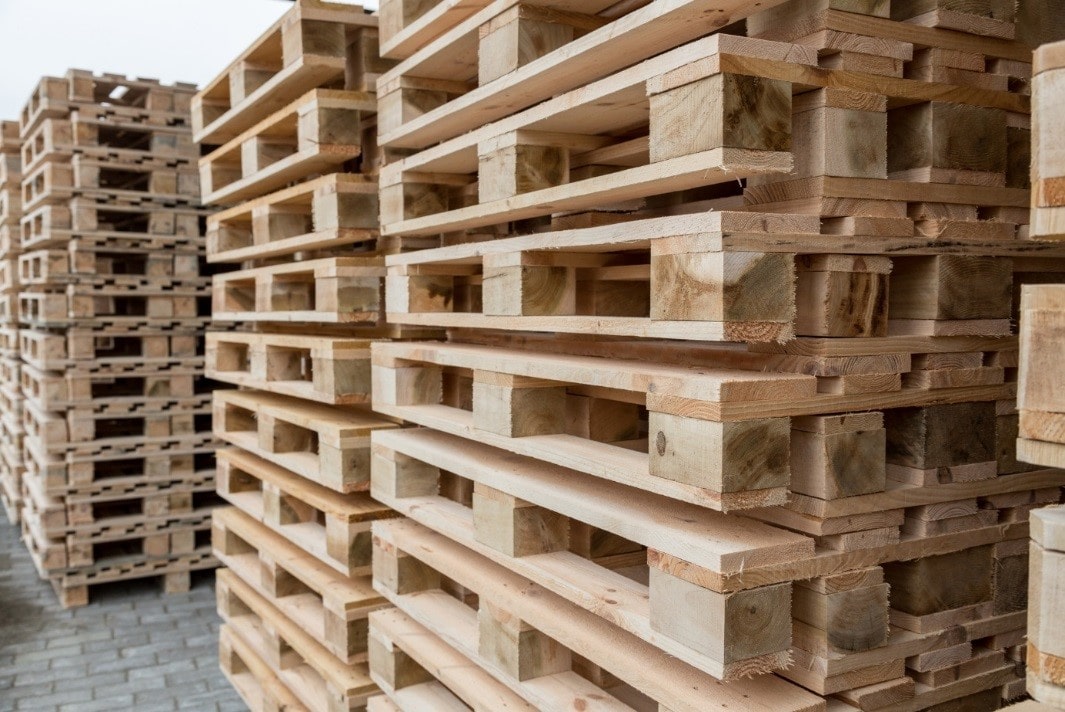The HS code for wooden pallets is 44152000 Pallets, box pallets, other load boards, and pallet collars
Understanding Wooden Pallets: A Comprehensive Guide to India’s Contribution to the Global Market
Wooden pallets are indispensable in modern logistics and warehousing, playing a crucial role in the transportation, storage, and protection of goods. India's wooden pallet industry has gained prominence due to its ability to meet international standards and its growing export capabilities. In this article, we’ll explore the types of wooden pallets exported from India, the key manufacturing hubs, their uses, the global market landscape, and the policies influencing this sector.
What are Wooden Pallets?
Wooden pallets are flat structures typically made from durable types of wood, designed to support goods in a stable manner. They facilitate efficient handling with forklifts and other equipment, ensuring safe transit and storage. These pallets are widely used in industries such as agriculture, pharmaceuticals, retail, and manufacturing.
Types of Wooden Pallets Exported from India
India manufactures a diverse range of wooden pallets to cater to domestic and international demands. The most common types include:
- Stringer PalletsThese have parallel pieces of wood, called stringers, that support the top deckboards. They are versatile and commonly used in warehousing.
- Block PalletsKnown for their sturdiness, block pallets have solid wood blocks supporting the structure. They are suitable for heavier loads and are a popular choice in Europe and North America.
Two-Way and Four-Way Entry Pallets
- Two-Way Pallets: Accessible from two sides, making them simpler to manufacture.
- Four-Way Pallets: Accessible from all sides, offering greater convenience in material handling.
- Heat-Treated PalletsThese pallets undergo treatment to eliminate pests and comply with international phytosanitary regulations, making them export-ready.
Key Manufacturing States for Wooden Pallets in India
India has a robust network of wooden pallet manufacturing units, spread across multiple states. The primary hubs include:
- Punjab and Haryana: Known for their access to quality timber and strong manufacturing ecosystems.
- Tamil Nadu: Home to a thriving woodworking industry with export-oriented units.
- Maharashtra: A key center for both domestic and international logistics, supporting pallet production.
- Karnataka and Kerala: Renowned for using sustainable wood sources in pallet manufacturing.
- Uttar Pradesh and Gujarat: Emerging players due to their abundant resources and proximity to export ports.
Uses of Wooden Pallets
Wooden pallets are essential in various industries due to their versatility and durability. Key uses include:
- Warehousing and Storage: Ensuring goods are stored systematically and are easily accessible.
- Shipping and Transportation: Protecting goods from damage during transit.
- Retail Display Units: Offering a rustic and sturdy display option in stores.
- Agriculture: Safeguarding produce during storage and transport.
- Manufacturing: Serving as platforms for raw materials and finished goods within factories.
How Many Countries Import Wooden Pallets from India?
India exports wooden pallets to over 60 countries worldwide. Major importers include:
- United States and Canada: High demand for block and heat-treated pallets.
- European Union: Stringent quality requirements ensure India supplies top-tier pallets.
- Middle Eastern Countries: Steady demand due to robust construction and logistics sectors.
- Asia-Pacific Nations: Growing economies like Japan, South Korea, and Australia import pallets for diverse industrial applications.
Market Size: Local and International
The wooden pallet market is witnessing significant growth, driven by expanding logistics and warehousing sectors.
- Local Market Size:India's local market for wooden pallets is valued at approximately $1 billion. The growing e-commerce sector and increasing investments in supply chain infrastructure are boosting demand.
- International Market Size:Globally, the wooden pallet market was valued at around $73 billion in 2023, with India being a key contributor. Indian exports are projected to grow at a compound annual growth rate (CAGR) of 5-6% over the next five years.
Government Policies and Initiatives
The Indian government has introduced several policies to support the wooden pallet industry:
Export Promotion Schemes:
- MEIS (Merchandise Exports from India Scheme): Provides incentives to exporters of wooden pallets.
- RoDTEP (Remission of Duties and Taxes on Export Products): Aims to enhance competitiveness by reimbursing indirect taxes.
- Phytosanitary Compliance:Mandatory adherence to International Standards for Phytosanitary Measures (ISPM-15) ensures pest-free wooden pallets for exports.
- Sustainability Initiatives:Encouraging the use of plantation wood and recycled materials to minimize deforestation and environmental impact.
- Skill Development Programs:Training workers in advanced manufacturing techniques to improve productivity and quality.
The Road Ahead
India’s wooden pallet industry is poised for growth, driven by increasing global trade, the rise of e-commerce, and advancements in logistics. Strategic investments in automation and sustainability will further enhance the industry’s competitiveness. For businesses looking to capitalize on this thriving sector, understanding the nuances of global demand and staying compliant with international standards are essential.
As the world leans towards greener solutions, India’s emphasis on sustainable practices and government-backed initiatives will ensure that its wooden pallet industry remains a formidable player on the global stage.






